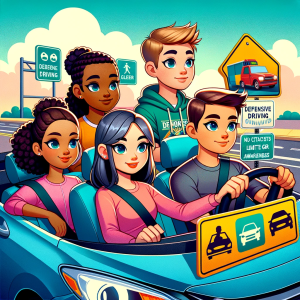Road rage is a common issue faced by drivers worldwide. It’s that sudden surge of anger or frustration while driving, often leading to aggressive behaviors like yelling, gesturing, or even dangerous driving maneuvers. Understanding how to manage road rage is crucial for maintaining safety and composure on the road. Here’s your guide to keeping your cool behind the wheel.
1. Recognize the Signs of Road Rage
The first step in managing road rage is recognizing its signs. These can include feeling excessively angry, impatient, or a desire to retaliate against other drivers. Acknowledging these feelings allows you to take steps to calm down.
2. Deep Breathing and Relaxation
When you start feeling angry or frustrated, try deep breathing exercises. Inhale deeply, hold for a few seconds, and then exhale slowly. This can help in lowering your heart rate and calming your nerves.
3. Keep a Positive Attitude
Maintain a positive attitude while driving. Understand that traffic delays or other drivers’ mistakes are not personal attacks. Being forgiving and patient goes a long way in preventing road rage.
4. Plan Ahead
Leaving late and rushing can contribute to frustration and road rage. Plan your trips to allow extra time for unexpected delays. Being in less of a hurry reduces stress and the likelihood of anger.
5. Avoid Escalating Situations
If another driver is aggressive or confrontational, do your best to avoid escalating the situation. Don’t make eye contact, don’t respond to aggression, and keep a safe distance.
6. Listen to Calming Music
Listening to calming or enjoyable music can significantly improve your mood while driving. It can serve as a distraction from the frustrations of traffic.
7. Pull Over If Needed
If you feel that your anger is getting out of control, it’s okay to pull over in a safe place. Take a moment to relax and only resume driving when you feel calmer.
8. Reflect on Your Behavior
After driving, reflect on instances where you felt angry. Understanding what triggers your road rage can help in managing it better in the future.
9. Consider Professional Help
If road rage is a frequent problem, consider seeking professional help. Anger management classes or counseling can provide effective strategies for controlling anger.
Conclusion
Road rage can be a dangerous emotion while driving, but with the right strategies, it’s manageable. Remember, the goal of driving is not just to reach your destination but to do so safely. Keeping your cool behind the wheel ensures not only your safety but also that of others on the road.





